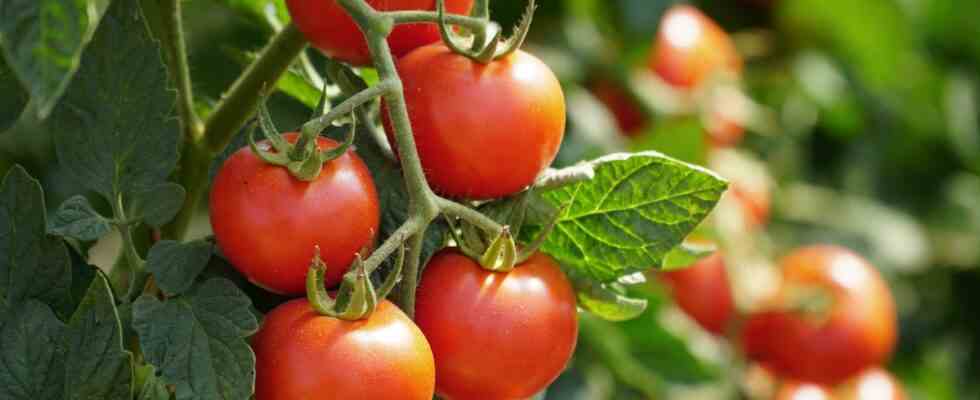How tomatoes help fight bacteria
In the industrial processing of tomatoes large amounts of residues are formed from skins, stems and seeds. It has now been found that it is possible to eliminate these residues using a simple and environmentally friendly process Mixtures with antimicrobial activity to process against pathogenic bacteria.
In a new study led by experts from the University of Nova de Lisboa became the proof of concept for the production of antimicrobial oligomers from materials with a lot cutin provided, which can be isolated from so-called tomato pomace. The study is published in the English-language journal “ACS Sustainable Chemistry & Engineering” released.
Tomato peel contains cutin
The shell of tomatoes acts as a barrier against external damage, preventing both water loss and entry of pathogens. The outer part of the shell is called cuticle labeled and consists mostly of cutin.
Cutin is a polymer, i.e. a network of molecules, which is very common in nature. Cutin gives the skin of the tomatoes their antimicrobial propertiesexplains the team.
What is tomato pomace?
In Europe alone, according to the experts, around ten million tons of tomato fruit processed. During processing, residues of shells, stalks and seeds remain, which can be used as tomato pomace be designated. Most of the pomace is used as animal feed.
Marc can get into the composition differ greatly, which is reflected in different proportions of seeds, shells and stems. These differences are due to different processing and cultivation methods attributed, the researchers explain.
For their study, the experts extracted cutin from two different types of tomato pomace. They came from two different countries. The team used a liquid extraction agent to obtain the cutin biodegradable and biocompatible is and recycled and reused can be.
Tomatoes to fight Staphylococcus aureus
The experts succeeded in converting the extracted extracts into mixtures with antimicrobial activity against pathogens bacteria to process.
Both mixtures were effective against Staphylococcus aureus and Escherichia colialthough there were differences in the effectiveness against E. coli, which depended on the composition of the pomace, the researchers report.
Advantages of the new method
“Many studies have explored the potential of tomato skins as a source of cutin. However, they are based on long processes with several steps. We have just demonstrated that it is possible to extract cutin from tomato pomace in a fast, simple and environmentally friendly process‘” said the study author Rita Escorcio in a press release.
The extracts can then be processed into mixtures which have antimicrobial properties. In the future, such mixtures could be used to Biomaterials antimicrobial properties to lend, adds the expert.
“Further studies are needed to optimize the production of broader bactericidal mixtures from all cutin-rich sources. In the future we want to transfer this process to an industrial scale and look for methods to make it even more environmentally friendly‘ adds the co-author Cristina Silva Pereira added. (as)
Author and source information
This text corresponds to the requirements of medical specialist literature, medical guidelines and current studies and has been checked by medical professionals.
Important NOTE:
This article contains general advice only and should not be used for self-diagnosis or treatment. He can not substitute a visit at the doctor.

